Variation Law of Thickness Fraction of Three-Laminated Aluminum Composite Plate by Solid–Liquid–Solid and Liquid–Solid–Liquid Twin-Roll Casting
Abstract
1. Introduction
2. Experimental Materials and Methods
2.1. Manufacture Process
2.2. Experimental Materials
| Temperature (°C) | Density (g/cm3) | Specific Heat (J/(kg·K)) | Heat Conductivity (W/(m·K)) |
|---|---|---|---|
| 227 | 2.719 | 997 | 236 |
| 327 | 2.719 | 1040 | 231 |
| 427 | 2.719 | 1080 | 225 |
| 527 | 2.719 | 1149 | 218 |
| 627 | 2.719 | 1231 | 210 |
| 646 | 2.719 | 1264 | 208 |
| 657 | 2.368 | 1176 | 90.9 |
| 670 | 2.368 | 1177 | 91.4 |
| 710 | 2.368 | 1177 | 93 |
3. Solid–Liquid–Solid Twin-Roll Casting Process
3.1. Thermal Mechanical Coupling Calculation Model of SLS-TRC Process
3.2. Simulation Results
3.3. Solid–Liquid-Solid Cast-Rolling Composite Experiment and Composite Interface Bonding Process
4. LSL-TRC Process
4.1. Thermal Mechanical Coupling Calculation Model of the LSL-TRC Process
4.2. Simulation Results
4.3. LSL-TRC Experiment and Composite Interface Bonding Process
5. Comparison of the SLS-TRC Process and LSL-TRC Process
6. Conclusions
- (1)
- In the solid–liquid–solid twin-roll casting (SLS-TRC) composite process of three-laminated aluminum composite plates, the core molten pool does not directly contact the casting roll, the heat energy is transferred through the cladding, and the heat energy transfer efficiency to the casting roll is low. As the thickness of the cladding increases, the flow rate of the core aluminum melt decreases, the heat decreases, the height of the KISS point increases, the temperature rise of the cladding decreases, the starting position of the coordinated deformation gradually decreases relative to the height of the KISS point, the deformation degree of the cladding increases, and the deformation rate increases. The interface bonding process follows the N. Bay theory, and there is large deformation during the cast-rolling process.
- (2)
- In the liquid–solid–liquid twin-roll casting (LSL-TRC) composite process of three-laminated aluminum composite plates, the cladding molten pool can directly contact the casting roll, and the heat energy transfer efficiency to the casting roll is high. The heat in the core is released to the cladding as the cladding temperature decreases. As the thickness of the core material increases, the molten cladding aluminum flow rate at the inlet decreases, the heat decreases, the height of the KISS point increases, the temperature rise of the core decreases, the starting position of the coordinated deformation gradually decreases relative to the height of the KISS point, the deformation degree of the cladding increases, and the deformation rate increases. The interface bonding process conforms to the N. Bay theory, and there is also large deformation during the cast-rolling process.
- (3)
- Through the comparison of the two processes, it can be seen that the KISS point height of the SLS-TRC process is lower and that there is a risk of melt leakage, while the core temperature of the LSL-TRC process is higher and there is a risk of the core being melted. Through the comparison of different solid component thicknesses and the cast-rolling forces required by the two processes, it is determined that when manufacturing a three-laminated aluminum composite plate with a relatively small thickness fraction (the thickness fraction is less than 30%), the SLS-TRC process requires less load. When manufacturing a three-laminated aluminum composite plate with a relatively large thickness fraction (the thickness fraction is greater than 30%), LSL-TRC requires less load.
Author Contributions
Funding
Conflicts of Interest
References
- Zhang, H.-T.; Han, X.; Wang, D.-T.; Shao, B.; Qin, K.; Cui, J.-Z. Effect of clad ratio on interfacial microstructure and properties of cladding billets via direct-chill casting process. Trans. Nonferrous Met. Soc. China 2018, 28, 998–1006. [Google Scholar] [CrossRef]
- Honarpisheh, M.; Asemabadi, M.; Sedighi, M. Investigation of annealing treatment on the interfacial properties of explosive-welded Al/Cu/Al multilayer. Mater. Des. 2012, 37, 122–127. [Google Scholar] [CrossRef]
- Yan, G.Y.; Feng, M.A.; Cao, Z.Q.; Li, T.J.; Wang, T.M. Deformation and heat treatment ability of three-layer 6009/7050/6009 Al alloy clad slab prepared by direct-chill casting. Trans. Nonferrous Met. Soc. China 2018, 28, 9–19. [Google Scholar] [CrossRef]
- Lee, K.S.; Lee, Y.S.; Kwon, Y.N. Influence of secondary warm rolling on the interface microstructure and mechanical properties of a roll-bonded three-ply Al/Mg/Al sheet. Mater. Sci. Eng. A 2014, 606, 205–213. [Google Scholar] [CrossRef]
- Zhang, X.P.; Yang, T.H.; Castagne, S.; Wang, J.T. Microstructure; bonding strength and thickness ratio of Al/Mg/Al alloy laminated composites prepared by hot rolling. Mater. Sci. Eng. A 2011, 528, 1954–1960. [Google Scholar] [CrossRef]
- Gao, H.T.; Liu, X.H.; Qi, J.L.; Ai, Z.R.; Liu, L.Z. Microstructure and mechanical properties of Cu/Al/Cu clad strip processed by the powder-in-tube method. J. Mater. Processing Technol. 2018, 251, 1–11. [Google Scholar] [CrossRef]
- Mao, Z.; Xie, J.; Wang, A.; Wang, W.; Ma, D. Interfacial characterization and bonding properties of copper/aluminum clad sheets processed by horizontal twin-roll casting, multi-pass rolling, and annealing. Metals 2018, 8, 645. [Google Scholar] [CrossRef]
- Grydin, O.; Stolbchenko, M.; Schaper, M.; Belejová, S.; Králík, R.; Bajtošová, L.; Křivská, B.; Hájek, M.; Cieslar, M. New twin-roll cast Al-Li based alloys for high-strength applications. Metals 2020, 10, 987. [Google Scholar] [CrossRef]
- Xu, Z.; Wang, S.; Wang, H.; Song, H.; Li, S.; Chen, X. Effect of cooling rate on Microstructure and properties of twin-roll casting 6061 aluminum alloy sheet. Metals 2020, 10, 1168. [Google Scholar] [CrossRef]
- Haga, T. High speed roll caster for aluminum alloy. Metals 2021, 11, 520. [Google Scholar] [CrossRef]
- Bae, J.H.; Rao, A.P.; Kim, K.H.; Kim, N.J. Cladding of Mg Alloy with Al by Twin-Roll Casting. Scr. Mater. 2011, 64, 836–839. [Google Scholar] [CrossRef]
- Park, J.; Song, H.; Kim, J.-S.; Sohn, S.S.; Lee, S. Three-Ply Al/Mg/Al Clad Sheets Fabricated by Twin-Roll Casting and Post-Treatments (Homogenization Warm Rolling, and Annealing). Metall. Mater. Trans. A 2017, 48, 57–62. [Google Scholar] [CrossRef]
- Xu, J.; Fu, J.; Li, S.; Xu, G.; Li, Y.; Wang, Z. Effect of Annealing and Cold Rolling on Interface Microstructure and Properties of Ti/Al/Cu Clad Sheet Fabricated by Horizontal Twin-Roll Casting. J. Mater. Res. Technol. 2022, 16, 530–543. [Google Scholar] [CrossRef]
- Zhao, R.; Huang, H.; Yan, M.; Shen, H.; Yang, J. Effect of Cast Roll Sleeve Material on Temperature Field of Sandwich Composite Plate Solid-Liquid-Solid Twin-Roll Casting Process. Metall. Mater. Trans. B 2022, 53, 2051–2065. [Google Scholar] [CrossRef]
- Ji, C.; Huang, H.; Zhang, X.; Zhao, R. Numerical and experimental research on fluid flow, solidification, and bonding strength during the twin-roll casting of Cu/Invar/Cu clad strips. Metall. Mater. Trans. B 2020, 51, 1617–1631. [Google Scholar] [CrossRef]
- Huang, H.; Liu, W.; Wang, W. Thermal-Mechanical Coupled Modelling and Numerical Simulation for Twin-Roller Casting Process with Technique of Deactivate and Reactivate Element. China Mech. Eng. 2015, 26, 1503–1508. [Google Scholar]
- Ji, C.; Huang, H.; Zhang, J.; Zhao, R. Influence of the Substrate Strip on the Asymmetric Heat Transfer of Twin-Roll Casting for Fabricating Bimetallic Clad Strips. Appl. Therm. Eng. 2019, 158, 113818. [Google Scholar] [CrossRef]
- Zhan, L. Rheological Behavior Research and Thermo-Mechanical Coupled Analysis of Aluminium Continuous Roll Casting Process. Ph.D. Thesis, Central South University, Changsha, China, 2005. [Google Scholar]
- Park, J.J. Numerical analyses of cladding processes by twin-roll casting: Mg-AZ31 with aluminum alloys. Int. J. Heat Mass Transf. 2016, 93, 491–499. [Google Scholar] [CrossRef]
- Huang, H.; Liu, W.; Ye, L.; Du, F. Mechanism of Interface Local Fusion for Cu /Al Cladding Strip Fabricated in Twin-roll Casting and Bonding Process at Different Temperatures. J. Harbin Eng. Univ. 2016, 37, 432–437. [Google Scholar]
- Levykina, A.G.; Shkatov, V.V.; Mazur, I.P. Hot Rolling Strips at the Casting and Rolling Unit During Coil-to-Coil and Endless Rolling Modes. Procedia Manuf. 2019, 37, 472–477. [Google Scholar] [CrossRef]
- Mihalow, F.A. Radiation Thermometry in the steel Industry. In Theory and Practice of Radiation Thermometry; DeWitt, D.P., Nutter, G.D., Eds.; John Wiley & Sons: New York, NY, USA, 1998; pp. 861–904. [Google Scholar]
- Li, X.; Hu, S.; Xiao, W.; Zhu, Z. Analysis of the contact conductance and temperature distribution of strip in fast roll casting. Heavy Mach. 1999, 3, 34–37. [Google Scholar]
- Haugh, M.J. Radiation Thermometry in the aluminum Industry. In Theory and Practice of Radiation Thermometry; DeWitt, D.P., Nutter, G.D., Eds.; John Wiley & Sons: New York, NY, USA, 1998; pp. 905–972. [Google Scholar]
- Bay, N. Cold welding. Part 1: Characteristics, bonding mechanisms, bond strength. Met. Constr. 1986, 18, 369–401. [Google Scholar]
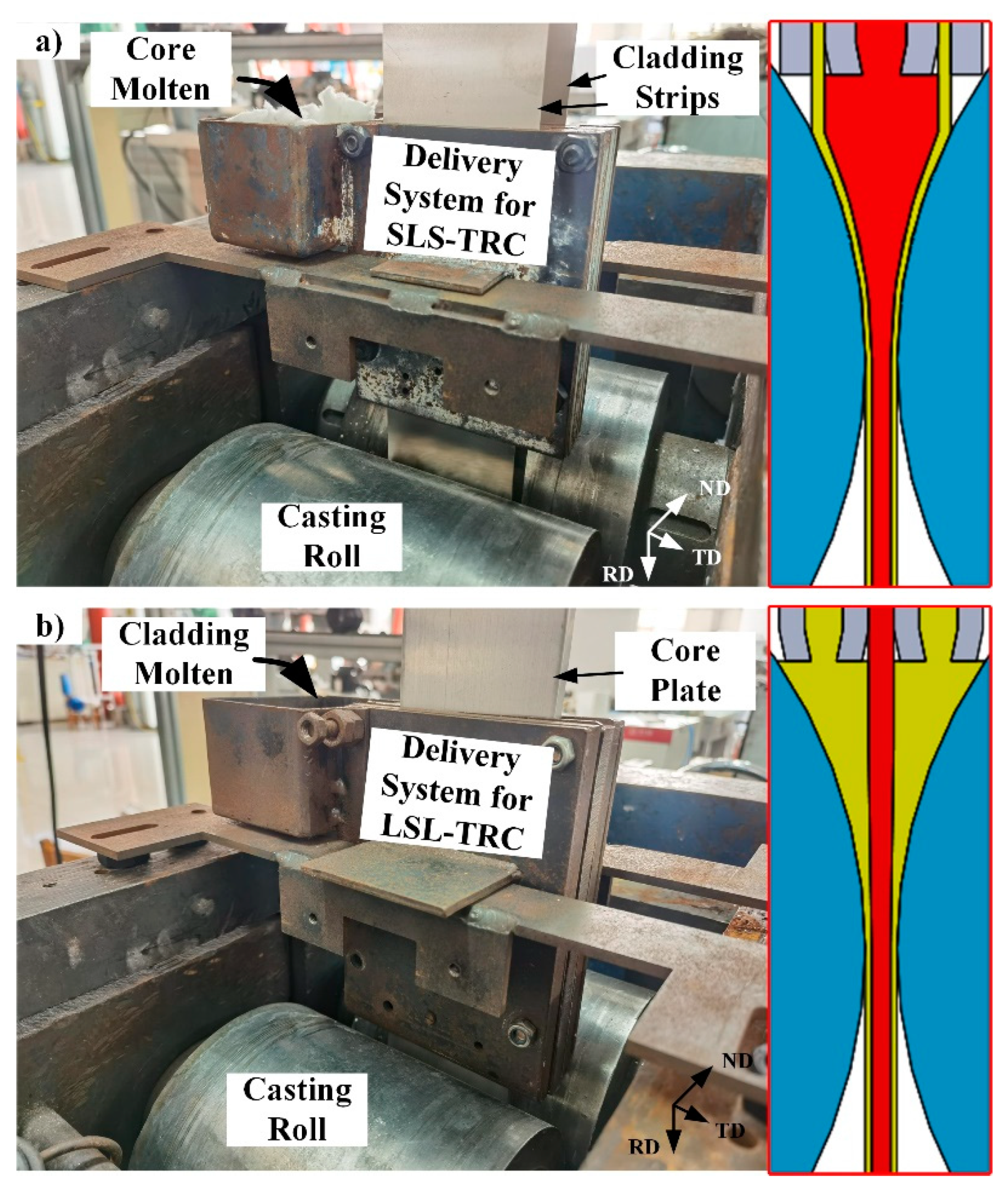

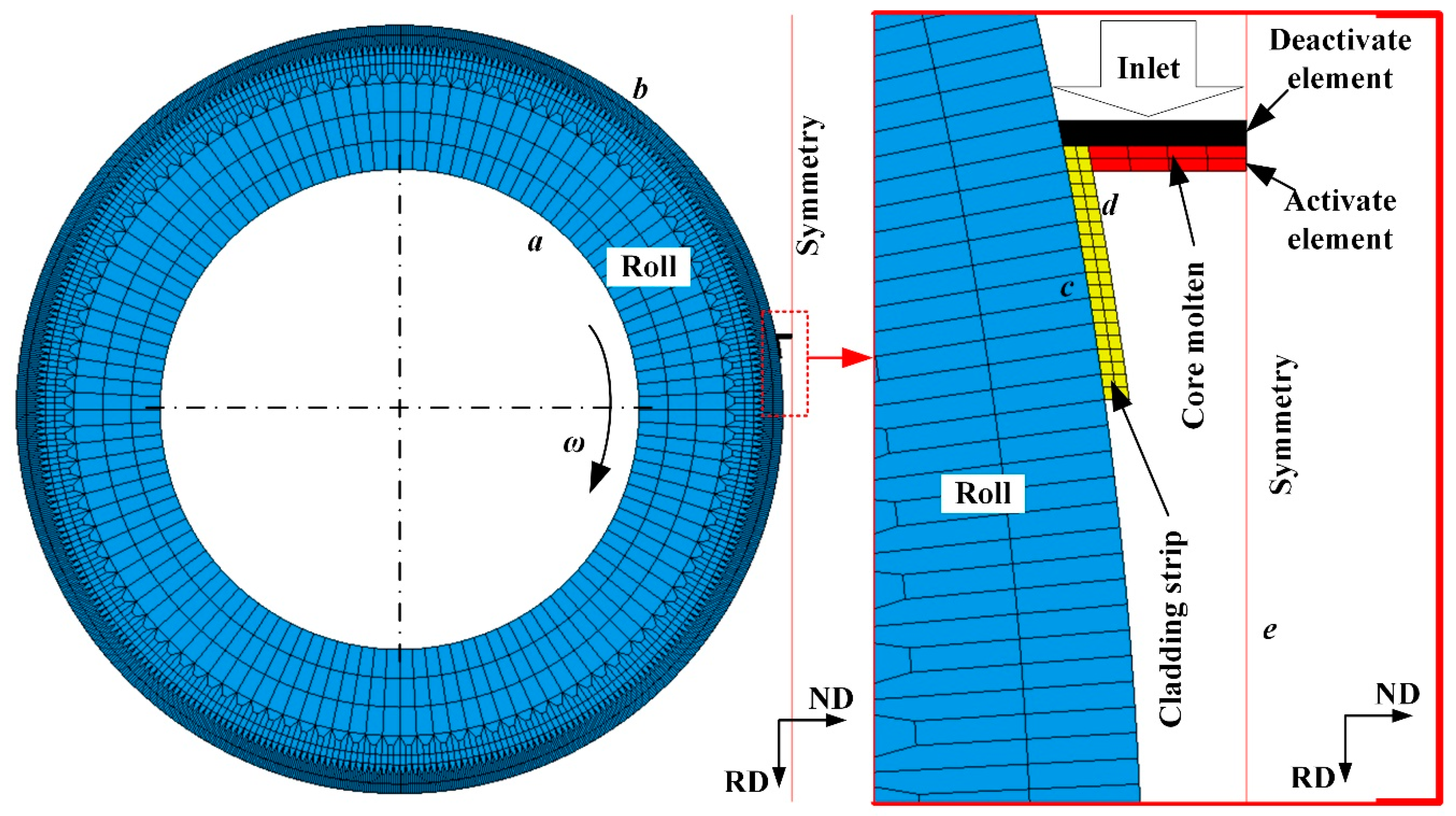
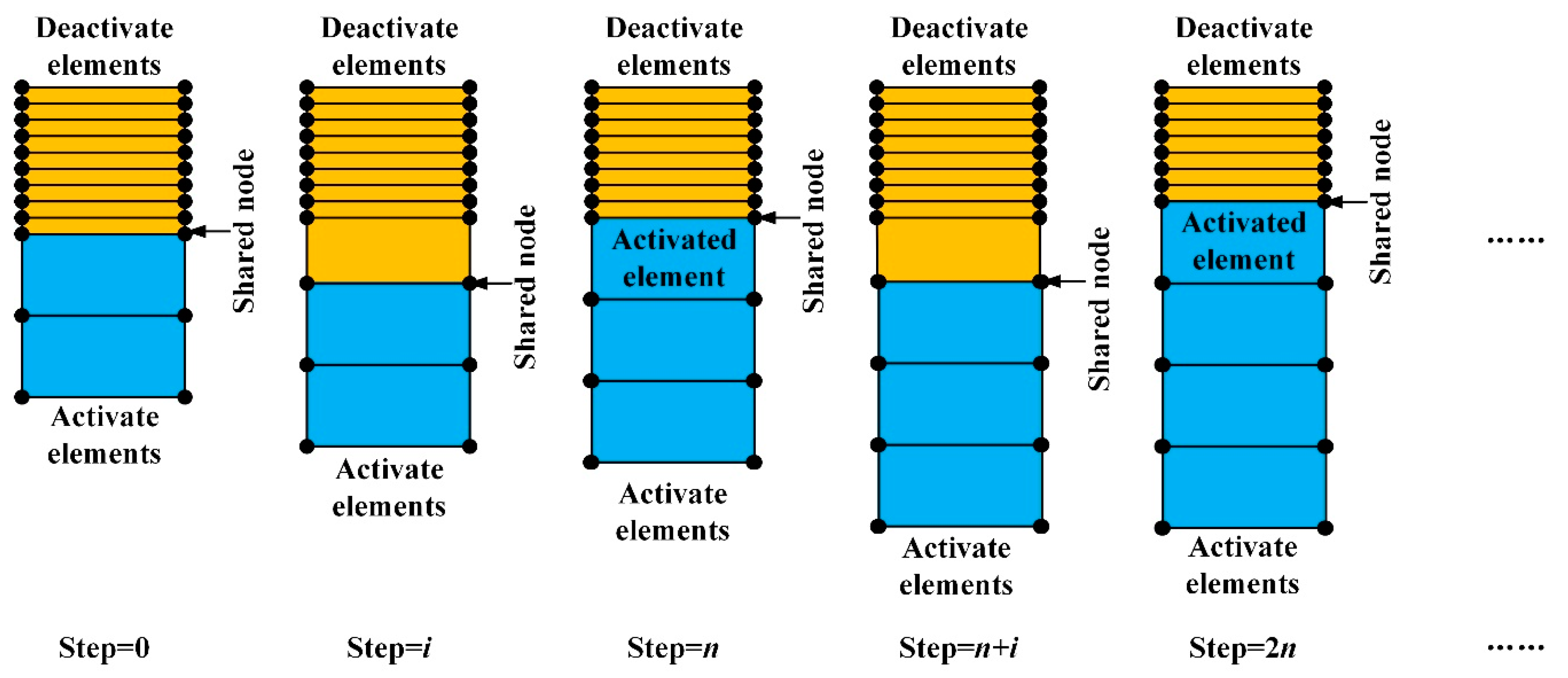
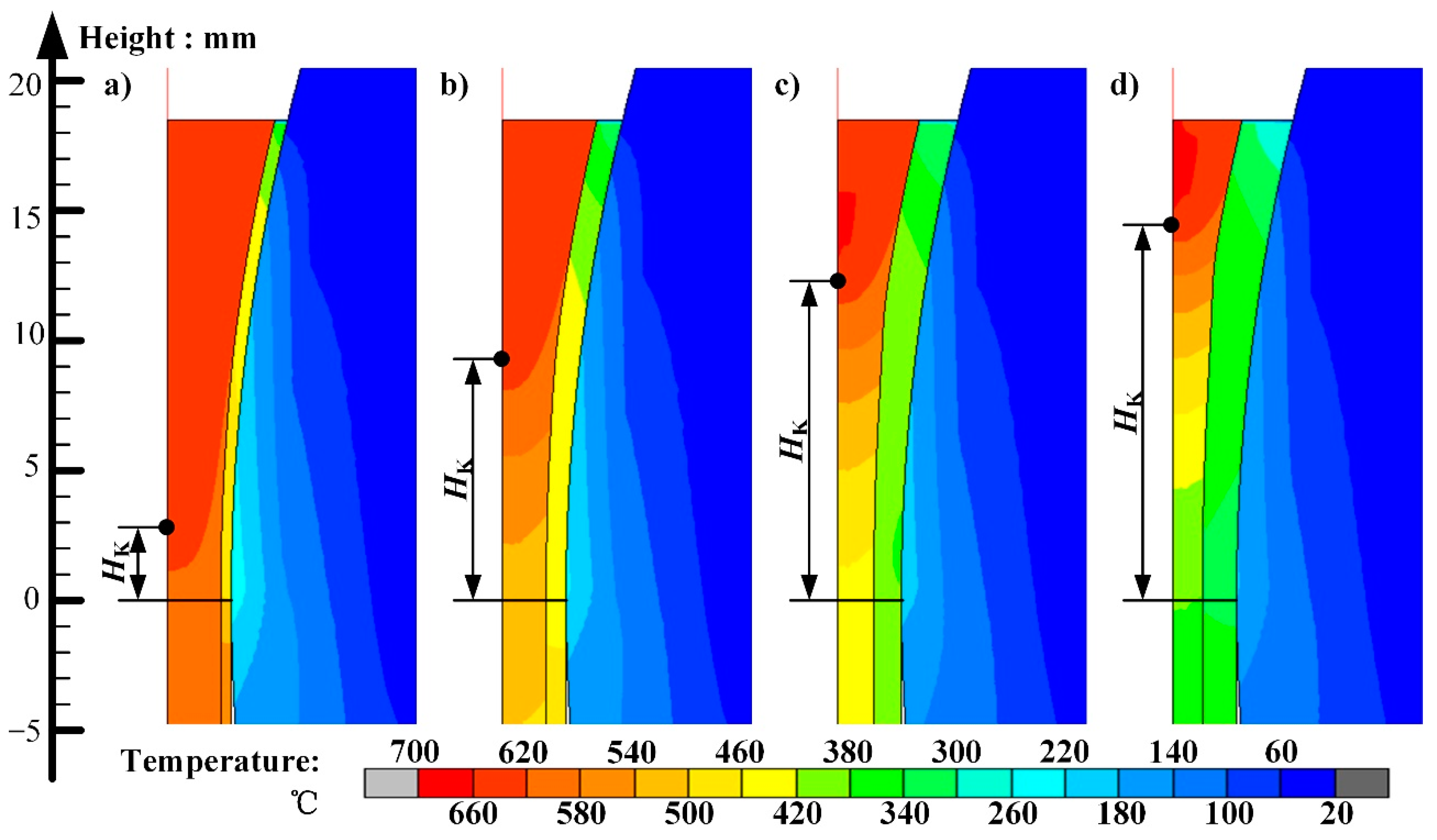
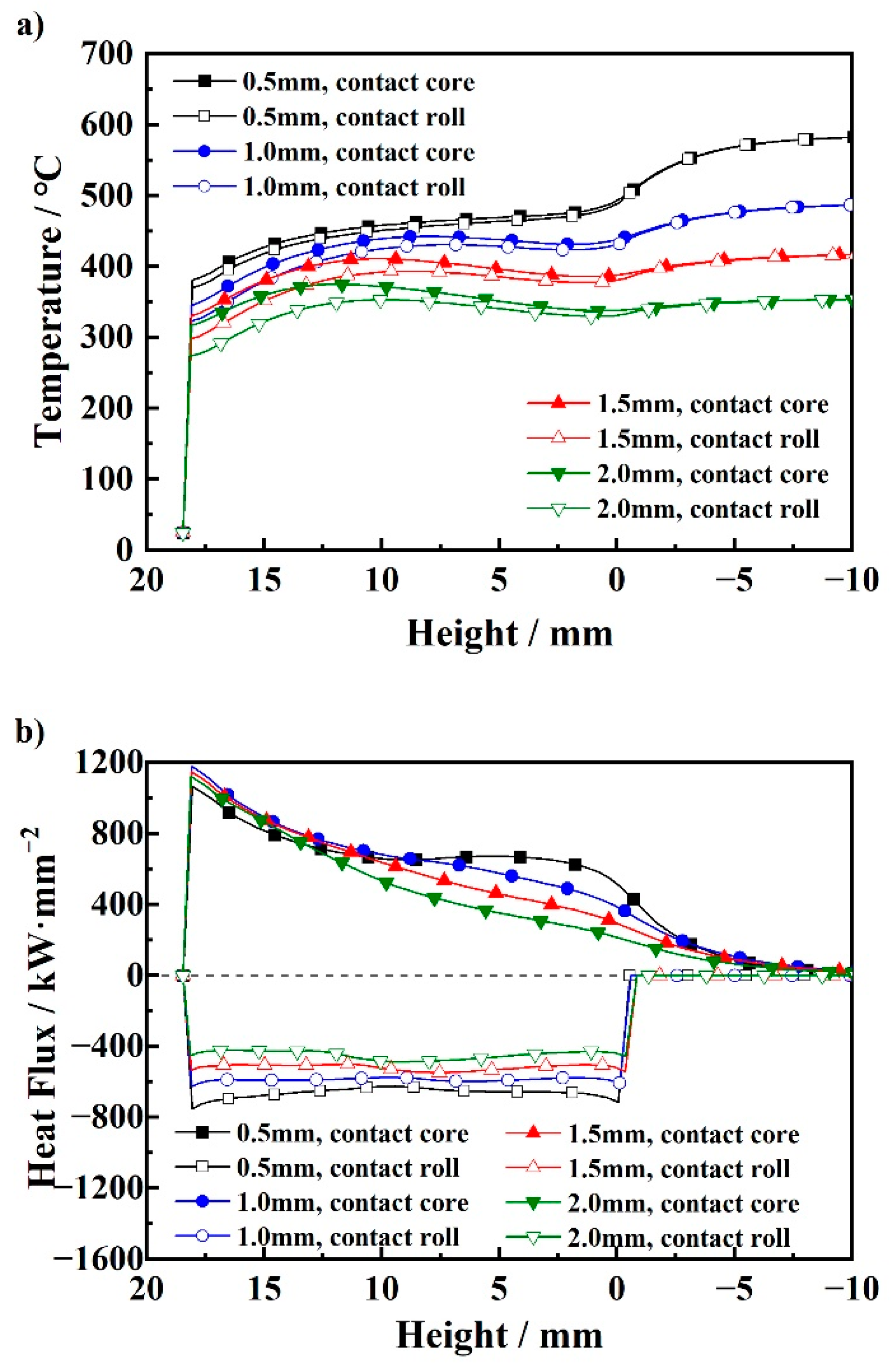
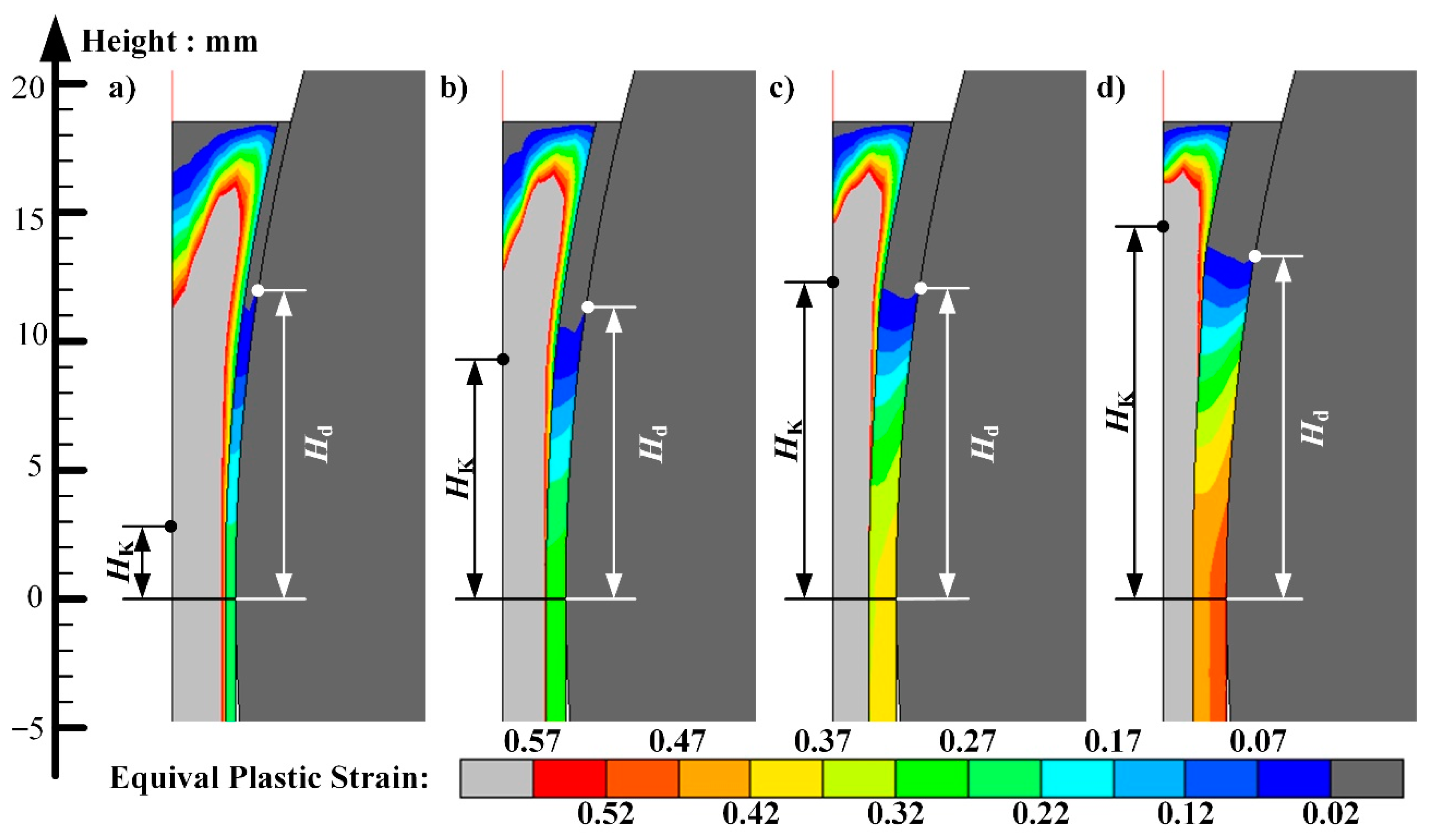
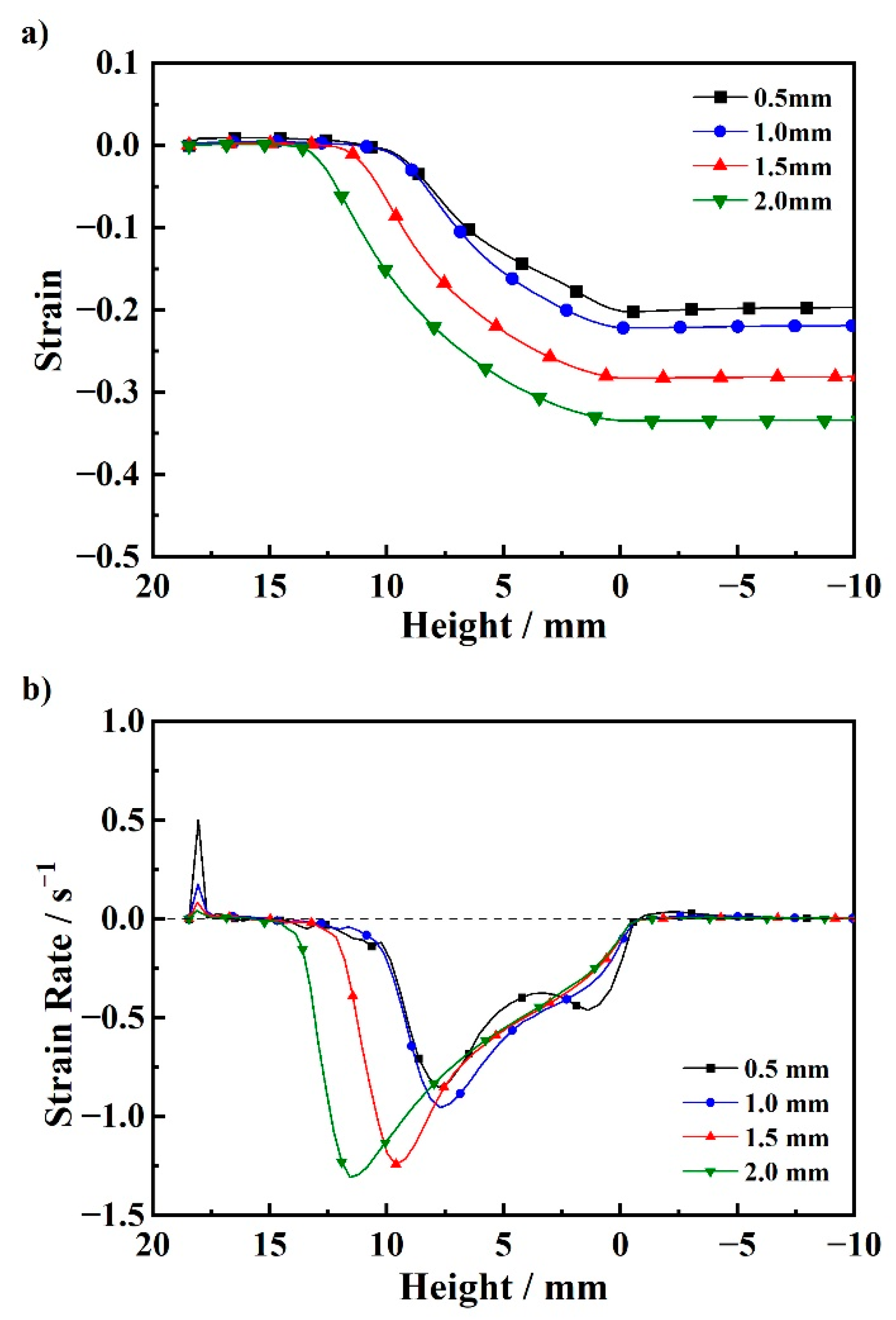
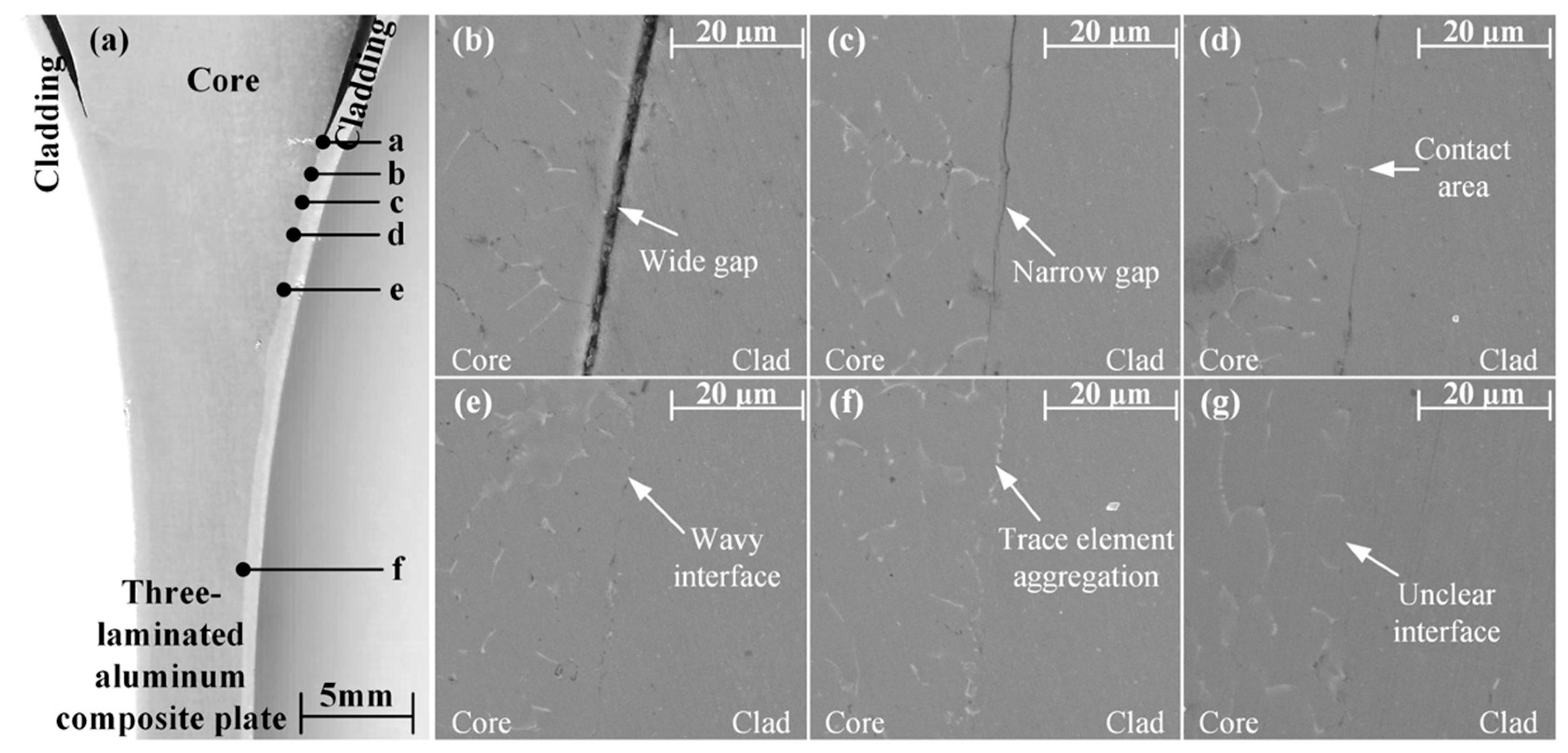
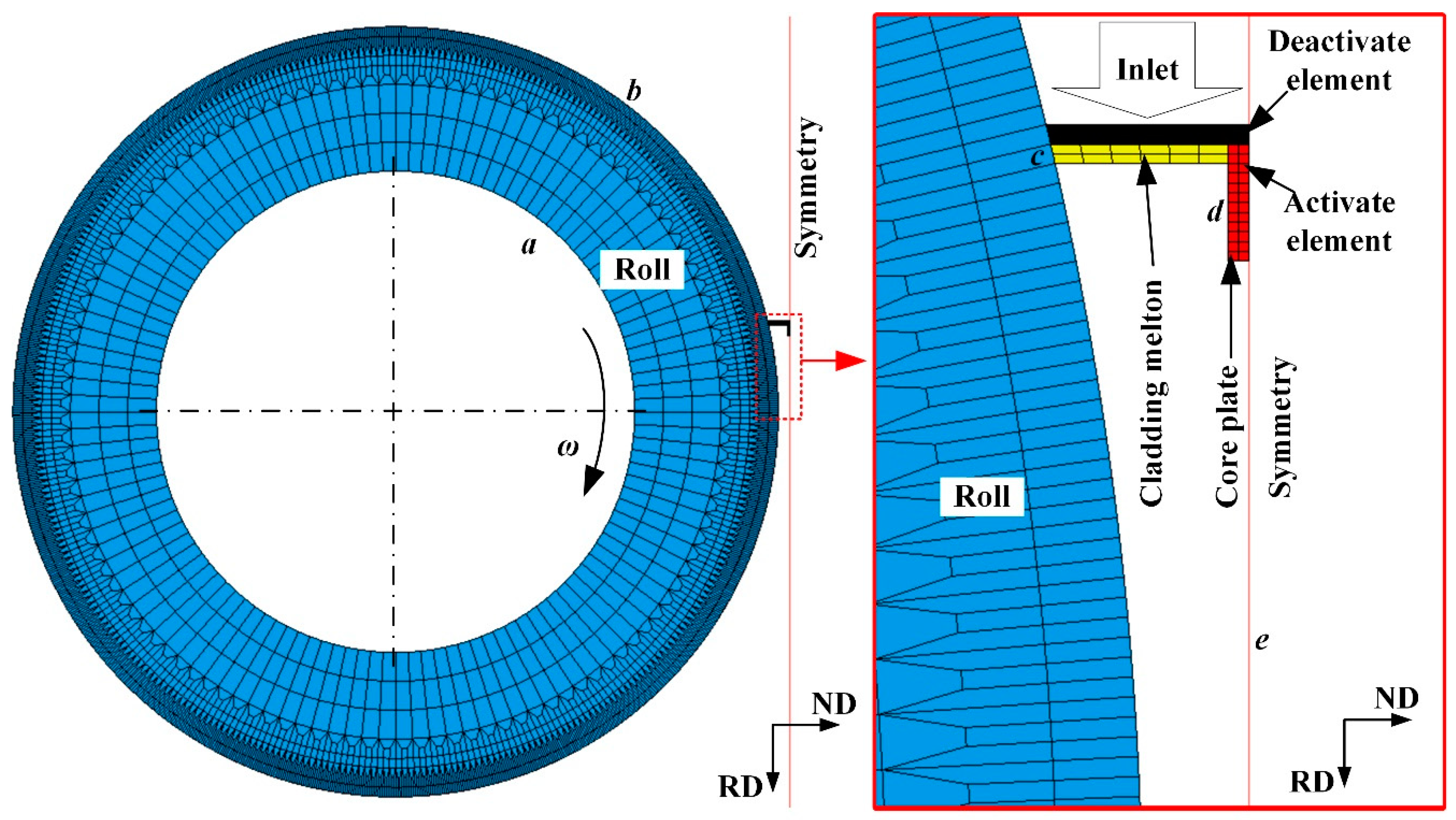

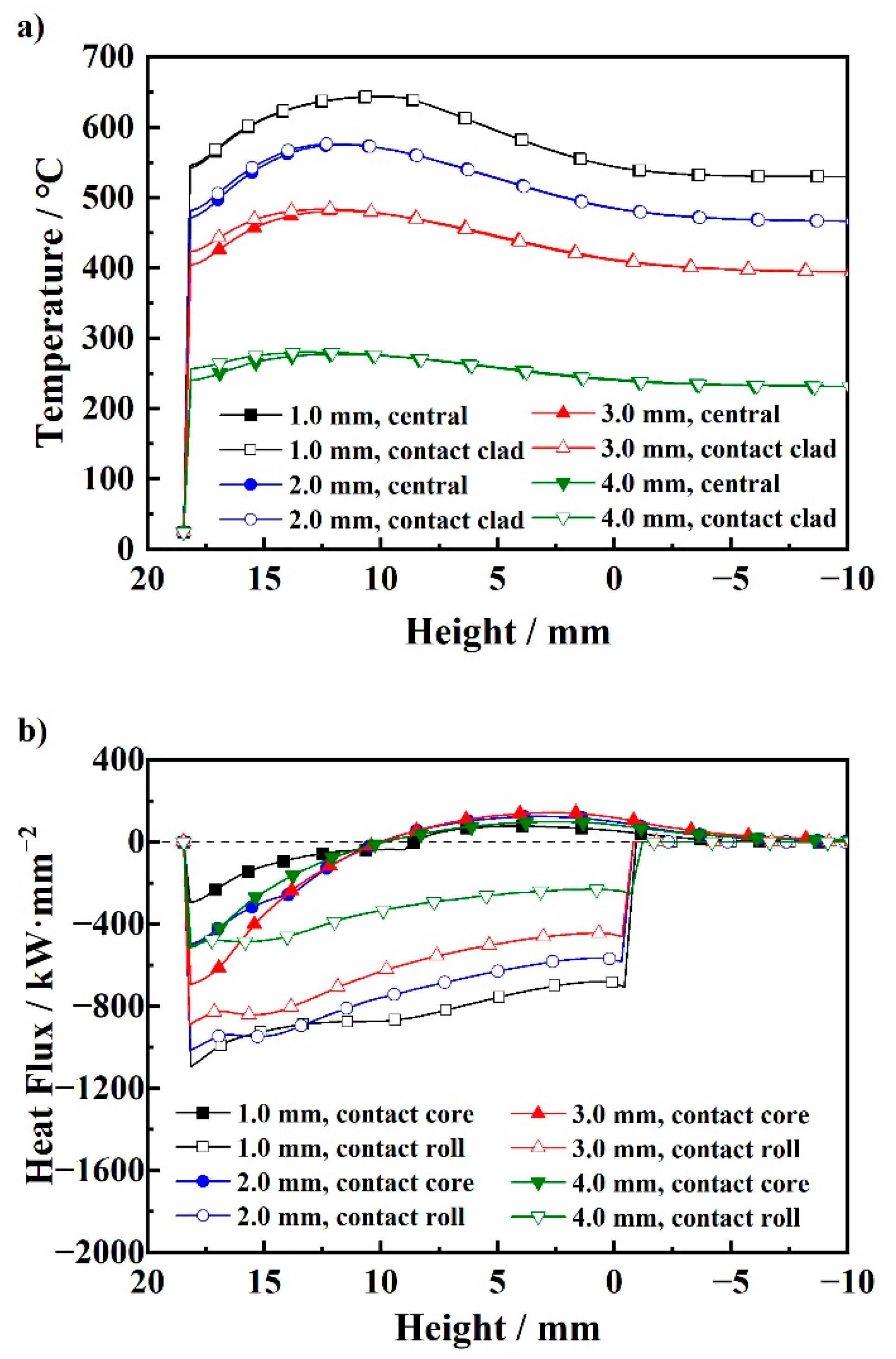

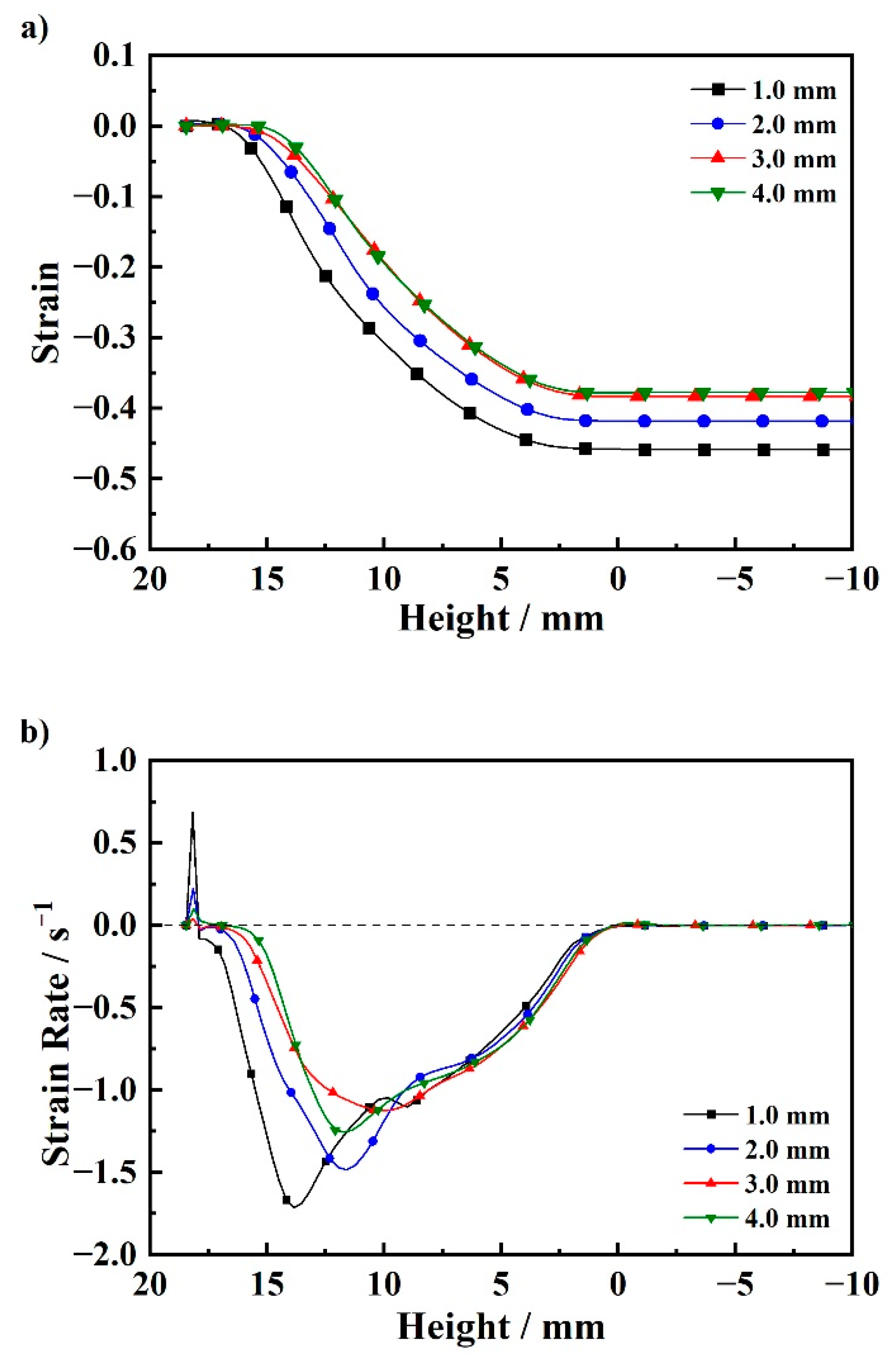
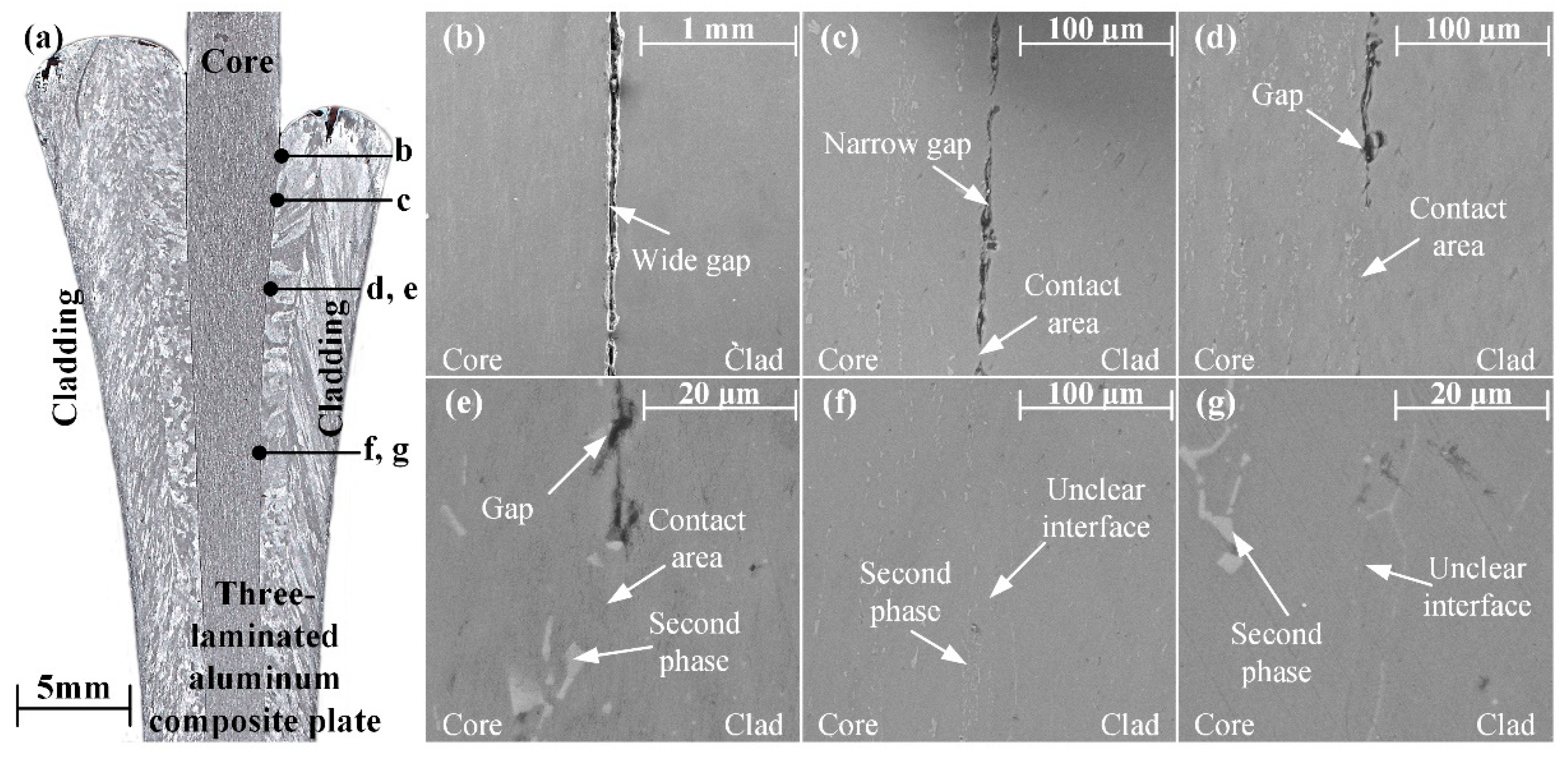
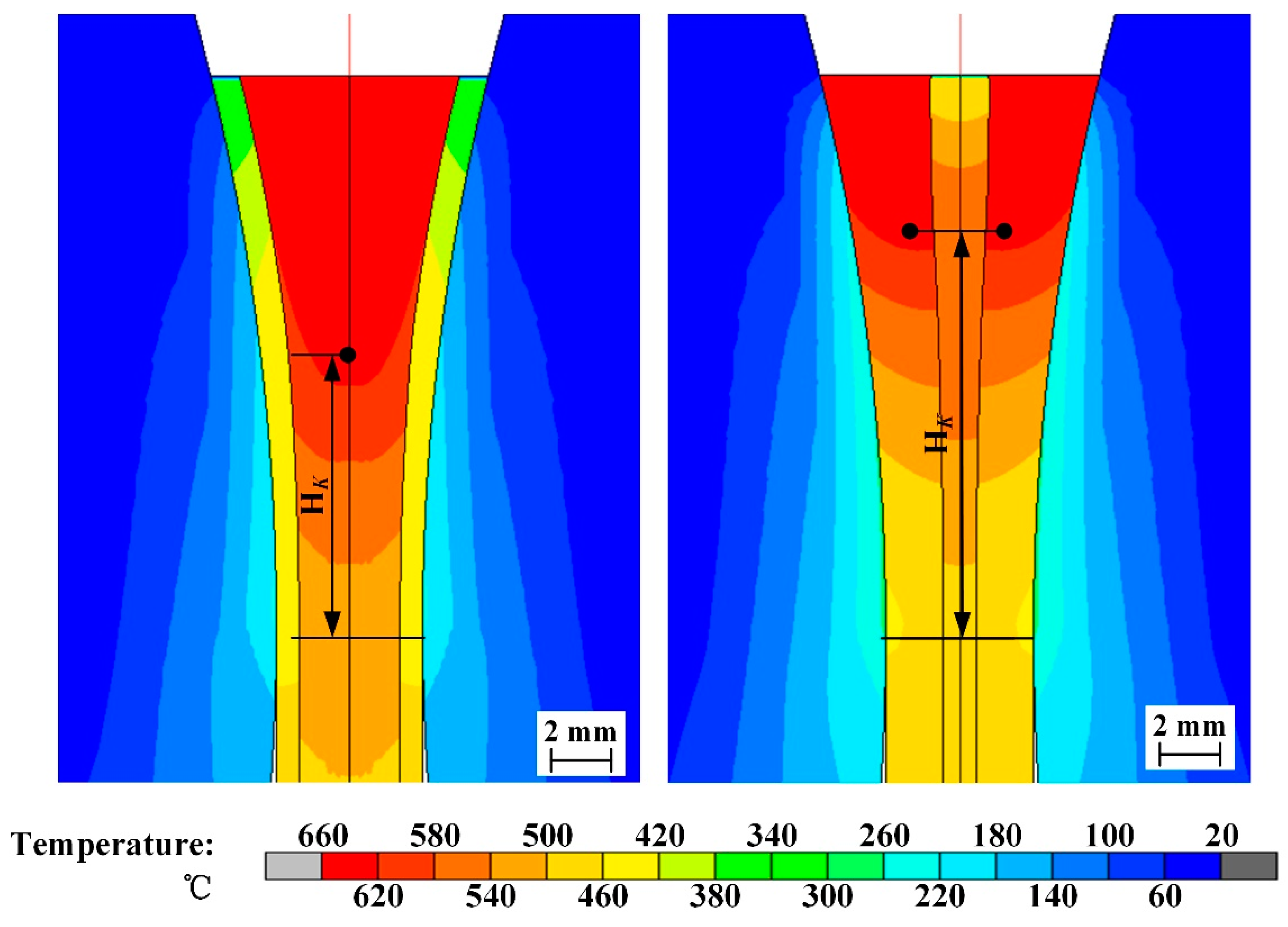
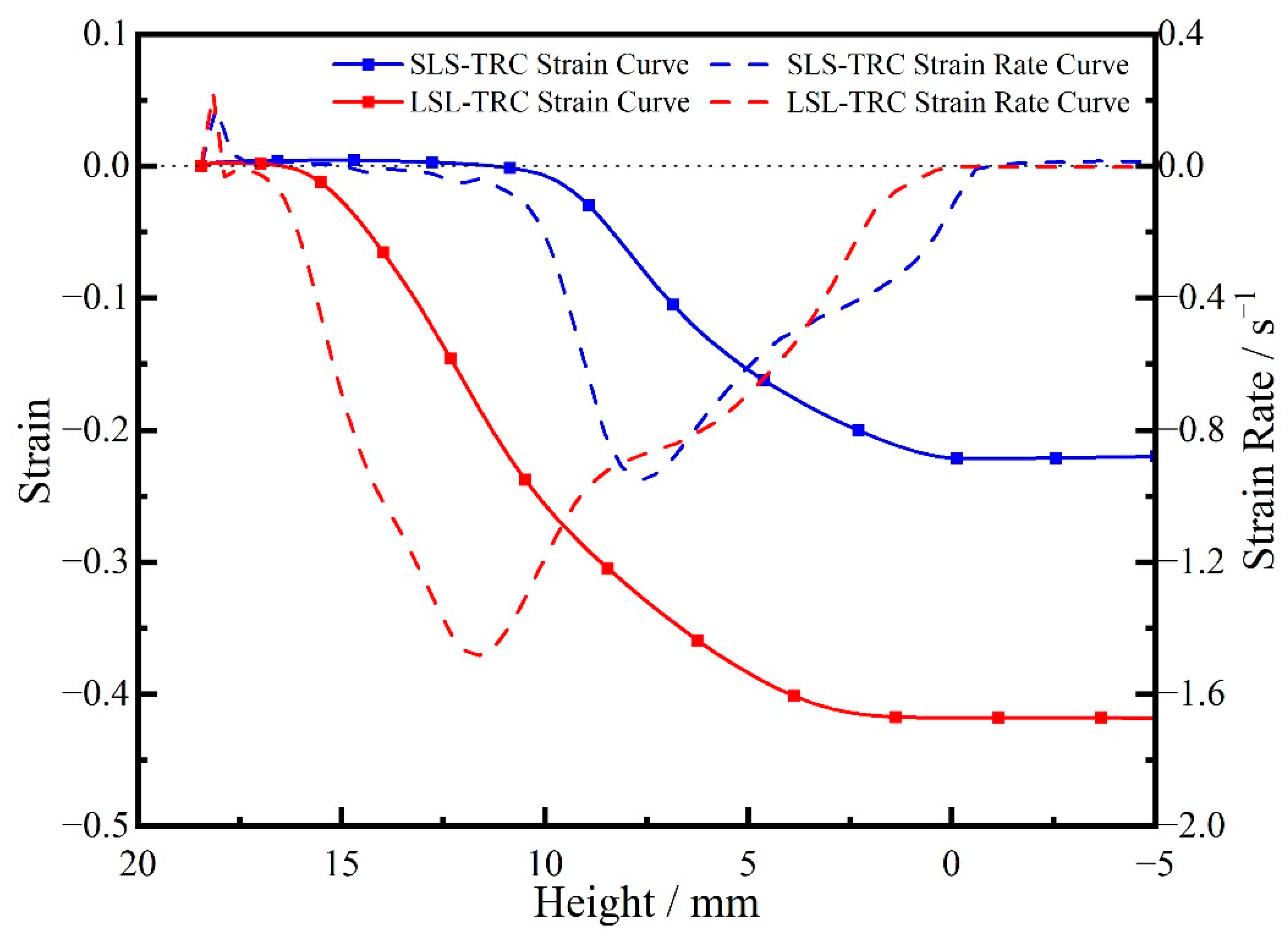
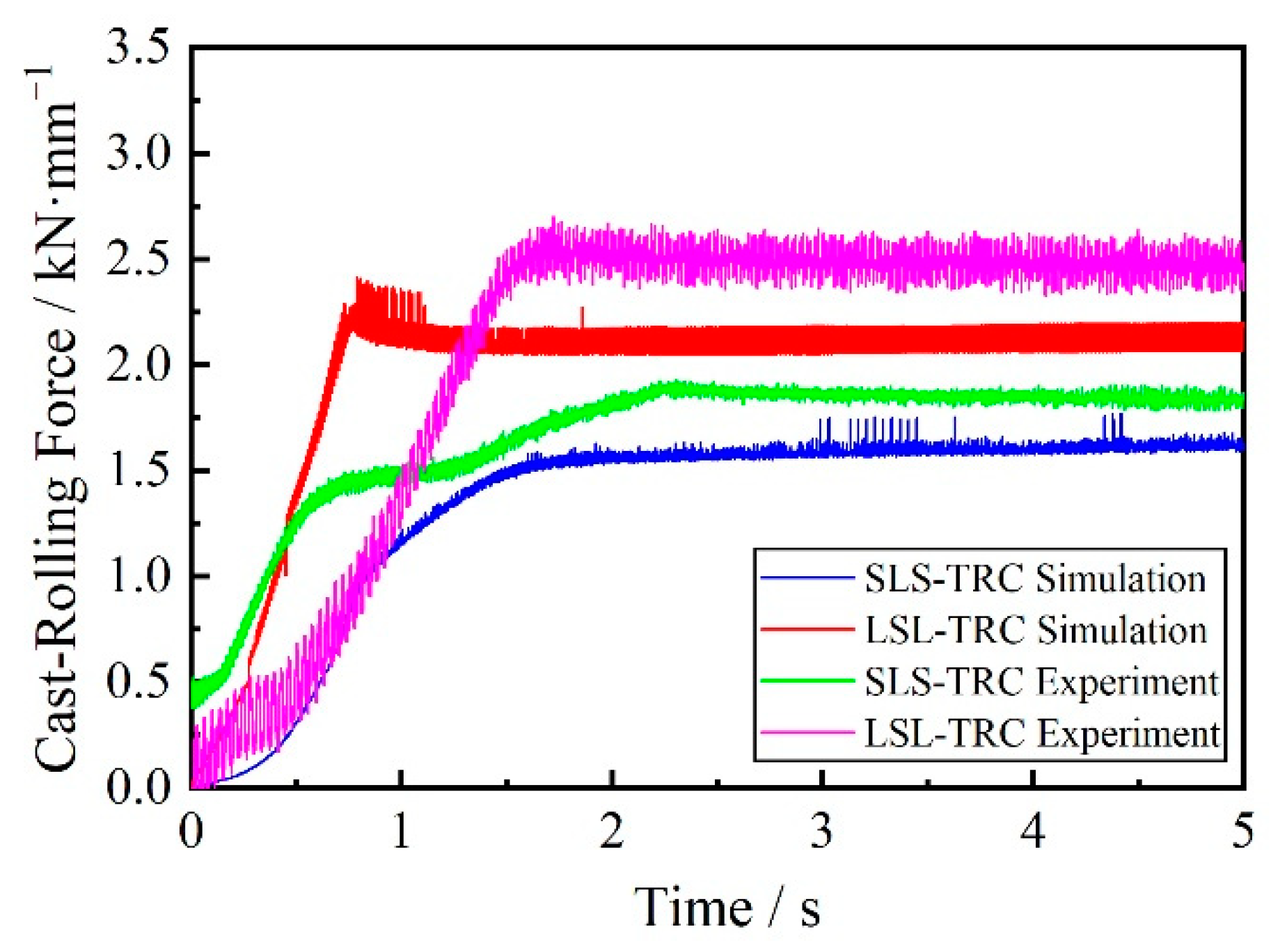
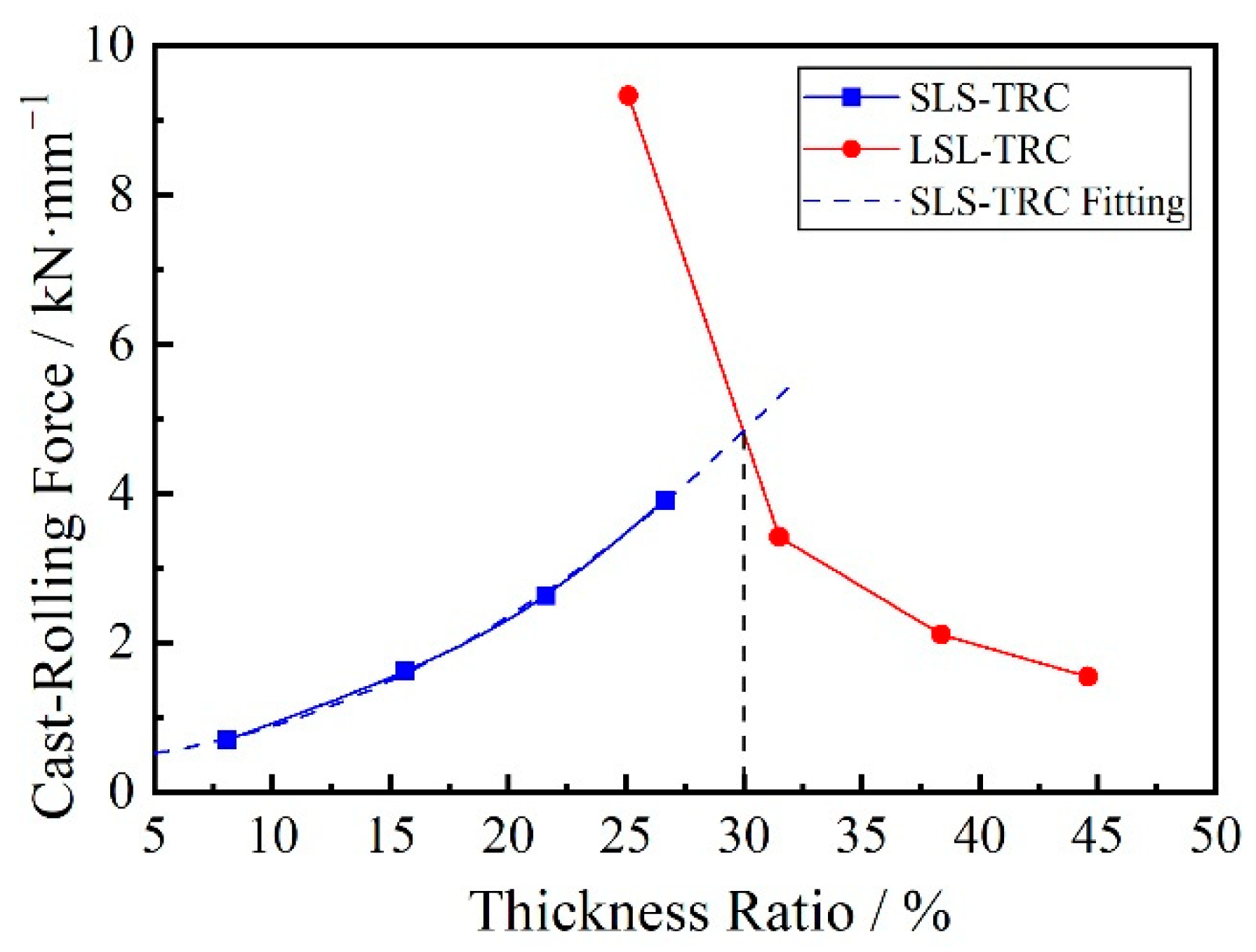
| Material | Mn | Fe | Si | Al |
|---|---|---|---|---|
| 1060 | 0.03 | 0.35 | 0.25 | Bal. |
| 3003 | 1.0~1.5 | 0.7 | 0.6 | Bal. |
| Temperature (°C) | Density (g/cm3) | Specific Heat (J/(kg·K)) | Heat Conductivity (W/(m·K)) |
|---|---|---|---|
| 20 | 7.85 | 45.1 | 461 |
| 100 | 45.1 | 496 | |
| 200 | 44.1 | 533 | |
| 300 | 41.9 | 568 |
| Parameters | Unit | Select Value | Select Range |
|---|---|---|---|
| T1060 | °C | 25 | - |
| T3003 | °C | 660 | - |
| Casting speed | m/min | 1.4 | - |
| Molten pool height | mm | 18.5 | - |
| H1060 | mm | 0.5 | 0.5, 1.0, 1.5 and 2.0 |
| outlet thickness | mm | 5 | - |
| Parameters | Unit | Select Value | Select Range |
|---|---|---|---|
| T1060 | °C | 660 | - |
| T3003 | °C | 25 | - |
| Casting speed | m/min | 1.4 | - |
| Molten pool height | mm | 18.5 | - |
| H3003 | mm | 1.0 | 1.0, 2.0, 3.0 and 4.0 |
| outlet thickness | mm | 5 | - |
Publisher’s Note: MDPI stays neutral with regard to jurisdictional claims in published maps and institutional affiliations. |
© 2022 by the authors. Licensee MDPI, Basel, Switzerland. This article is an open access article distributed under the terms and conditions of the Creative Commons Attribution (CC BY) license (https://creativecommons.org/licenses/by/4.0/).
Share and Cite
Zhao, R.; Yan, M.; Jiao, Z.; Guo, D.; Huang, H. Variation Law of Thickness Fraction of Three-Laminated Aluminum Composite Plate by Solid–Liquid–Solid and Liquid–Solid–Liquid Twin-Roll Casting. Metals 2022, 12, 1710. https://doi.org/10.3390/met12101710
Zhao R, Yan M, Jiao Z, Guo D, Huang H. Variation Law of Thickness Fraction of Three-Laminated Aluminum Composite Plate by Solid–Liquid–Solid and Liquid–Solid–Liquid Twin-Roll Casting. Metals. 2022; 12(10):1710. https://doi.org/10.3390/met12101710
Chicago/Turabian StyleZhao, Ridong, Meng Yan, Zishuai Jiao, Dongchun Guo, and Huagui Huang. 2022. "Variation Law of Thickness Fraction of Three-Laminated Aluminum Composite Plate by Solid–Liquid–Solid and Liquid–Solid–Liquid Twin-Roll Casting" Metals 12, no. 10: 1710. https://doi.org/10.3390/met12101710
APA StyleZhao, R., Yan, M., Jiao, Z., Guo, D., & Huang, H. (2022). Variation Law of Thickness Fraction of Three-Laminated Aluminum Composite Plate by Solid–Liquid–Solid and Liquid–Solid–Liquid Twin-Roll Casting. Metals, 12(10), 1710. https://doi.org/10.3390/met12101710






